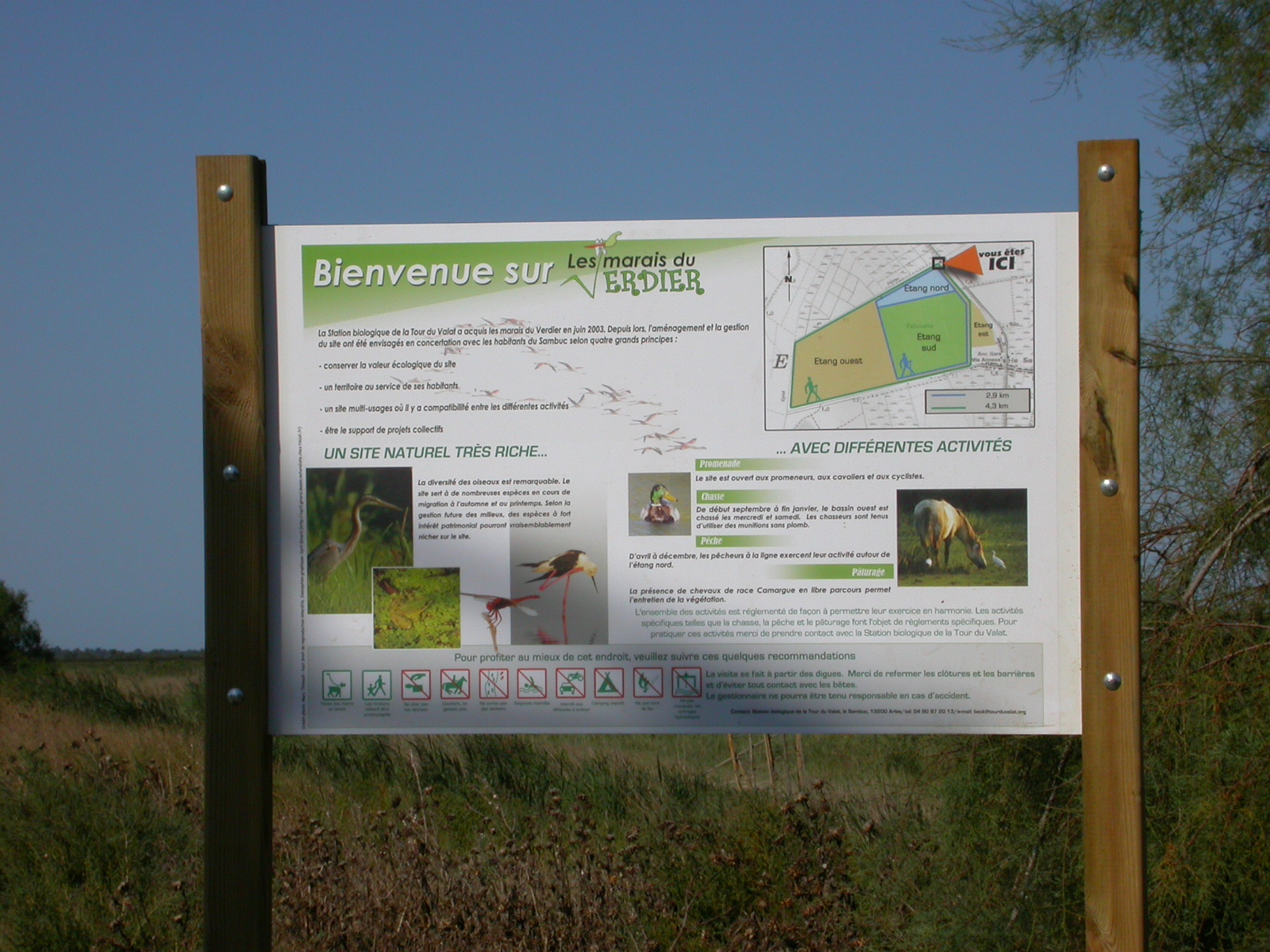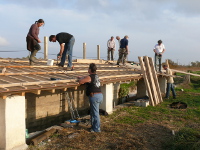Looking back at nine years of experience
In 2003, the Tour du Valat purchased the 120 hectare former Verdier fish farm, which is located in the northern part of the hamlet of the Sambuc.
The Tour du Valat wanted to enable the inhabitants of the hamlet to become involved in the management of this area, and to benefit from this acquisition by organising activities that would respect the site’s ecological value, and for the project to have an impact throughout the local area by favouring different kinds of collective activities. Our purpose was to demonstrate that human activities can in many cases be compatible with the protection of the ecological entities in a wetland.
An innovative approach for managing wetlands
he originality of this project was the choice we made to manage this site in close collaboration with local residents so as to lay the foundations for participative management that would be truly operational, contrary to the many natural area management projects in which there is no real participation by the local population.
For the Verdier project, the consultation phase lasted two years, which enabled activities to be rapidly set up that correspond to the needs expressed by local inhabitants. In addition, a specific management plan was implemented so as to guarantee that site management would respect the site’s ecological potential. The “Verdier Marshes Association,” which was created in 2004, has strengthened the identity of the project and enabled it to develop along the following lines:
A permanent marsh that is good for fishing and home to a variety of birds
The wish expressed to create fishing activities meant that a permanent body of water had to be maintained so that fish could breed and develop. This management action also favoured the natural development of a reedbed in half of the basin. It is harvested by a farmer, which, on the one hand, enables the reeds to be exploited economically, and, on the other hand, pays for the cost of pumping water. Today, the many reed passerines and herons that use this reedbed have given this site a high natural heritage value.
A temporary marsh in which hunting and biodiversity are compatible
Traditionally reserved for fee-paying members, hunting in the Camargue is now a privilege open to the residents of the Sambuc. Hunting regulations have evolved with the application of certain conservation principles, in particular, periods when the marsh is left to dry out, which are not generally appreciated by hunters. Yet, a long seasonal dry period reduces the spread of typha and reeds, and limits the development of invasive species such as Halmifolia and Paspalum, two exotic species with a high potential to cover up native plants. Combined with high grazing pressure from a herd of Camargue bulls during the entire summer, this annual dry period has moved us toward the expected result: an “open marsh” with no costly mechanical interventions needed.
Furthermore, at the current time, the results from hunting activities attest to how attractive this site has become for hunters.
Natural processes prevail over most of the site
In the other parts of the Verdier area, management with no artificial introduction of water has been applied. These parts are still very interesting for their fauna and flora, and for the activities that can take place there such as field trips for children from the village, picking wild lettuce, grazing horses that are on the site all year long, nature watching, and hiking.
A mosaic of habitats
The abrupt change in the management of this area linked to the cessation of the fish farming activity, which was initially characterised in particular by the complete drying out of the site, has led to the massive germination of the seeds contained in the sediment. Belts or thickets of tamarix have grown rapidly in the remnant zones that had previously remained humid. In the areas more or less irrigated by pumped water, scirpus and reedbed habitats have become established. In the areas in which water is managed naturally, vegetation is essentially made up of plants that are well-adapted to the summer dry period, grazing, and the presence of salt in the soil.. Crypsis aculeata is a protected graminaceae of regional interest, which has rapidly spread throughout the saline prairies and temporarily flooded marshes here, whereas it is rarely sited in other parts of the Camargue.
This mosaic of habitats is favourable to a wide variety of avifauna. In summer, a small colony of Collared pratincoles nests in the areas that are extensively grazed, and the Eurasian bittern and the Little bittern regularly nest in the reedbeds. The Great Reed-warbler and the Reed warbler are the two main reed passerines found here. In addition, many other sedentary species use this site as a feeding zone (White and Black stork, Spoonbill, Great egret, mallard, and coot).
A shared experience
Since 2005, the Verdier Marshes Association has grown to about fifty active members, which includes site users, volunteers, inhabitants, and benefactors. Well beyond the initial ideas of organising hunting or horse grazing activities on the site, the association has been able to set up unexpected activities and events. For example, the annual ‘Marsh Meal,’ at which food produced in the wetlands is served, brings together hunters, ornithologists, people from the village, and other members. Another important event is the horse care days, which bring together horse owners, a blacksmith, and a horse veterinarian and osteopath. The team also comes together to build site infrastructure such as an observation platform and observatories, fences, and to plant vegetation. On these occasions, each person can show what she or he knows how to do, and contribute to site management. Finally, volunteers are mobilised to conduct ecological monitoring of fauna, flora, and vegetation, and their collaboration with Tour du Valat scientists always results in an interesting exchange of information and experience.
This participative management approach has been raising growing interest: the Verdier Marshes Association has been asked to organise new activities such as a beehive for the local school and artistic events, and it has been making links with new partners. We hope that this experience, which has been described in depth in a manual entitled “Gestion partagée d’un marais en Camargue*”, will be used as an example and inspire new initiatives.
*only in french

